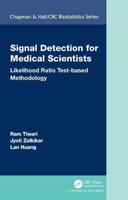Publisher's Synopsis
Drug development is a strictly regulated area. As such, marketing approval of a new drug depends heavily, if not exclusively, on evidence generated from clinical trials. Drug development has seen tremendous innovation in science and technology that has revolutionized the treatment of some diseases. And yet, the statistical design and practical conduct of the clinical trials used to test new therapeutics for safety and efficacy have changed very little over the decades. Our approach to clinical trials is steeped in convention and tradition. The large, fixed, randomized controlled trial methods that have been the gold standard are well understood and expected by many trial stakeholders. However, this approach is not well suited to all aspects of modern drug development and the current competitive landscape. We now see new therapies that target a small fraction of the patient population, rare diseases with high unmet medical needs, and pediatric populations that must wait for years for new drug approvals from the time that therapies are approved in adults. Large randomized clinical trials are at best inefficient and at worst completely infeasible in many modern clinical settings. Advances in technology and data infrastructure call for innovations in clinical trial design.
Despite advances in statistical methods, the availability of information, and computing power, the actual experience with innovative design in clinical trials across industry and academia is limited. This book will be an important showcase of the potential for these innovative designs in modern drug development and will be an important resource to guide those who wish to undertake them for themselves.
This book is ideal for professionals in the pharmaceutical industry and regulatory agencies, but it will also be useful to academic researchers, faculty members, and graduate students in statistics, biostatistics, public health, and epidemiology due to its focus on innovation.
Key Features:
- Is written by pharmaceutical industry experts, academic researchers, and regulatory reviewers; this is the first book providing a comprehensive set of case studies related to statistical methodology, implementation, regulatory considerations, and communication of complex innovative trial design
- Has a broad appeal to a multitude of readers across academia, industry, and regulatory agencies
- Each contribution is a practical case study that can speak to the benefits of an innovative approach but also balance that with the real-life challenges encountered
- A complete understanding of what is actually being done in modern clinical trials will broaden the reader's capabilities and provide examples to first mimic and then customize and expand upon when exploring these ideas on their own










